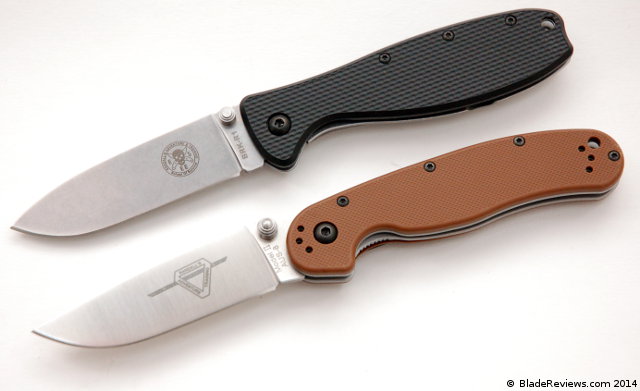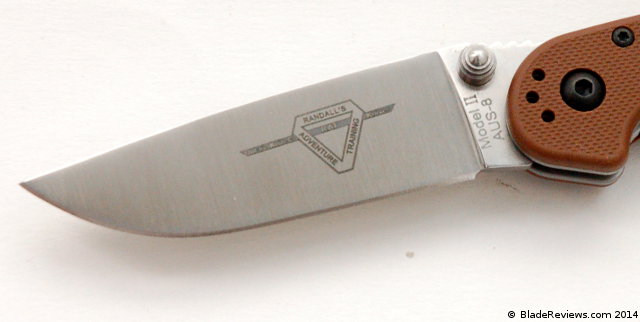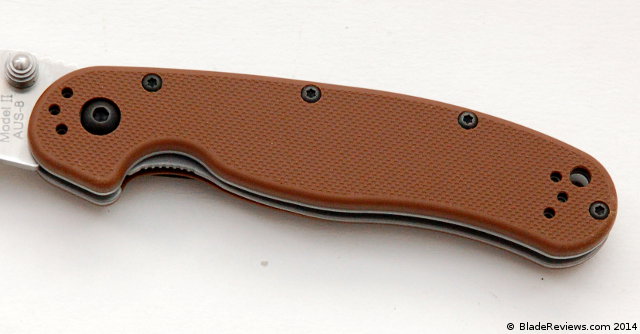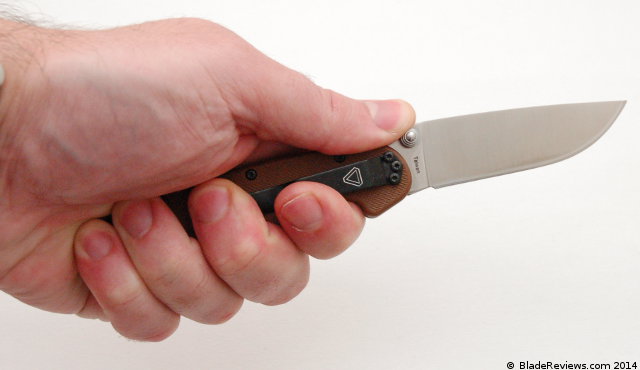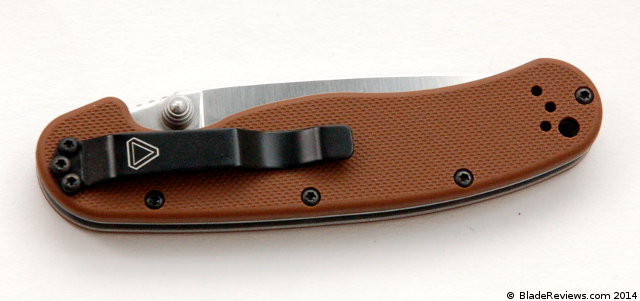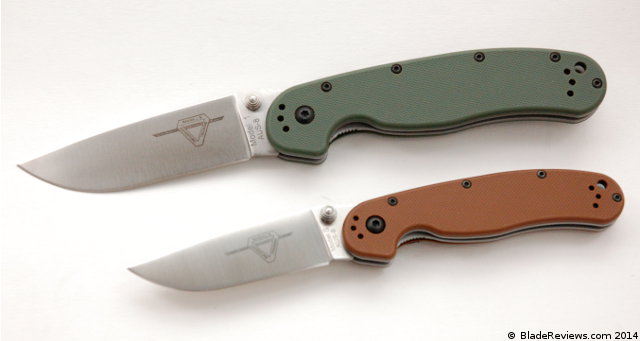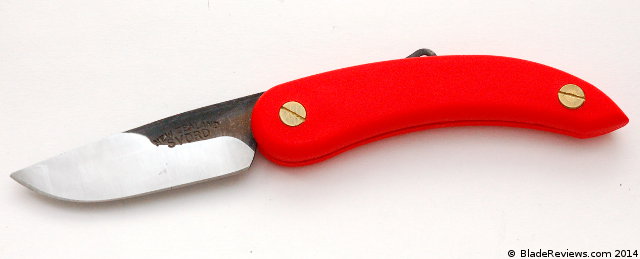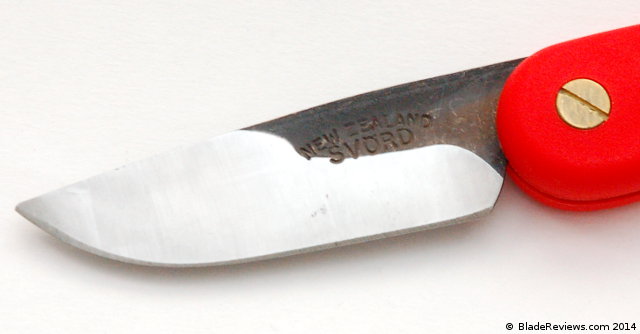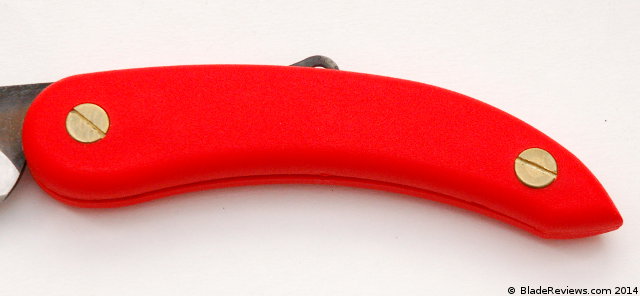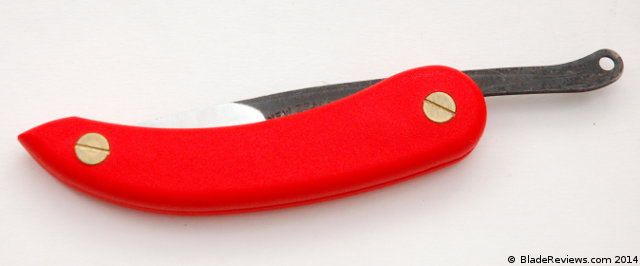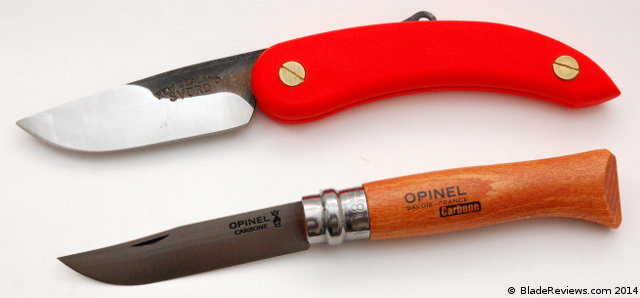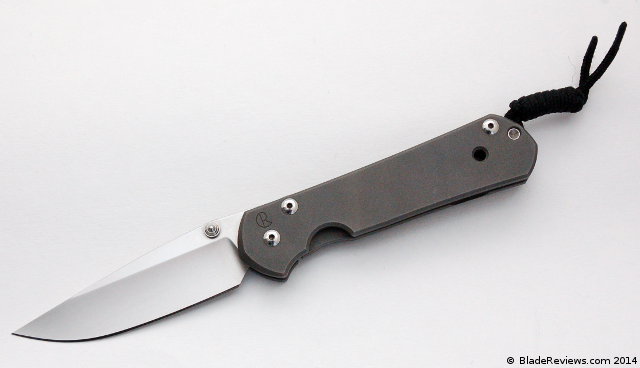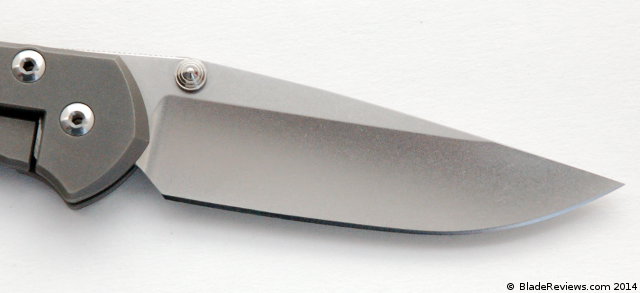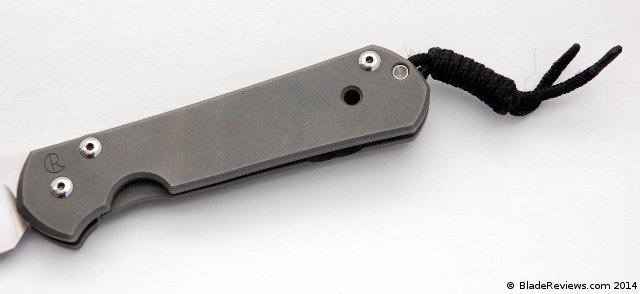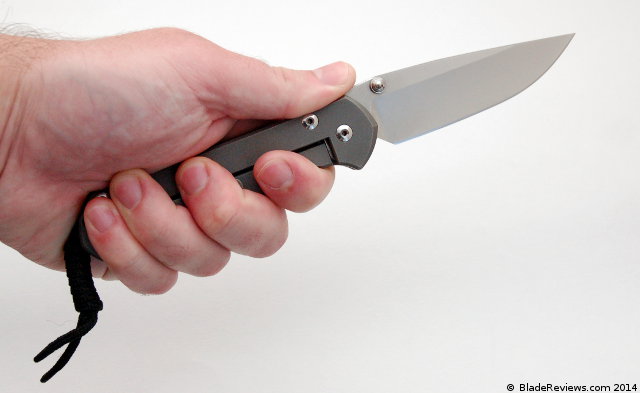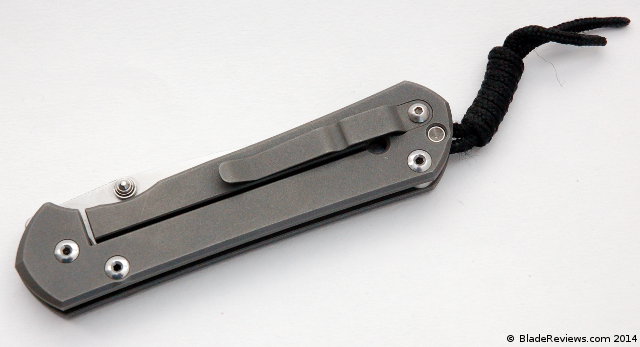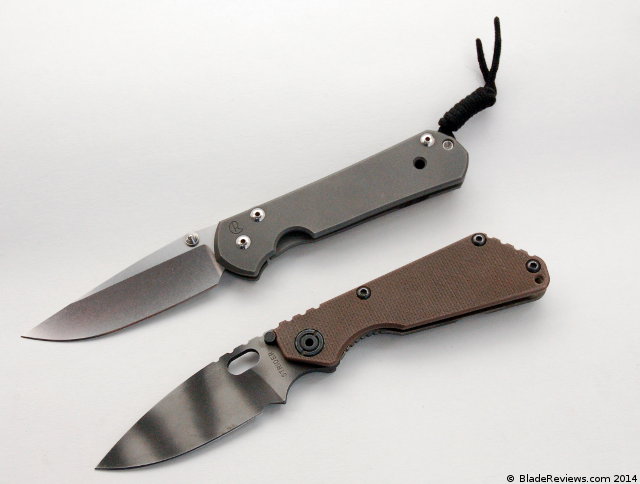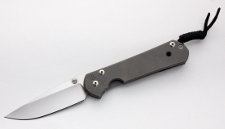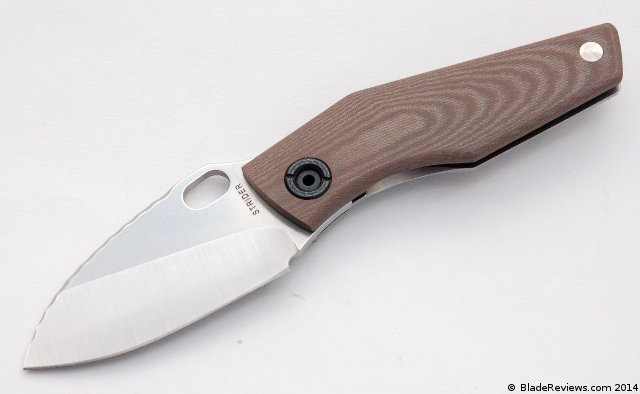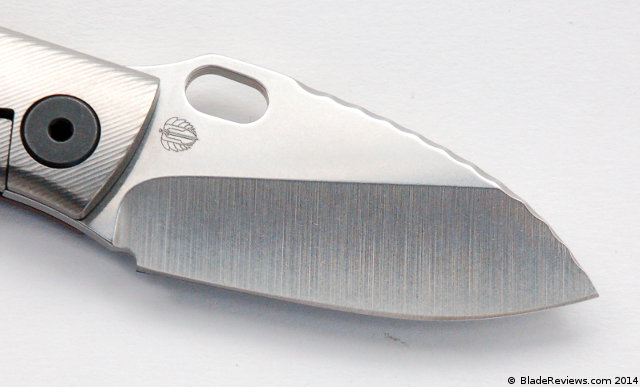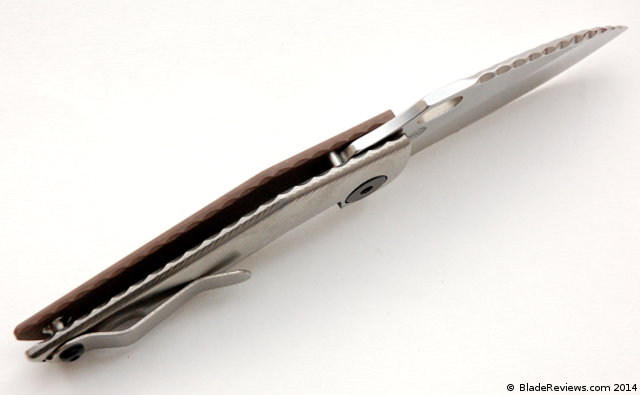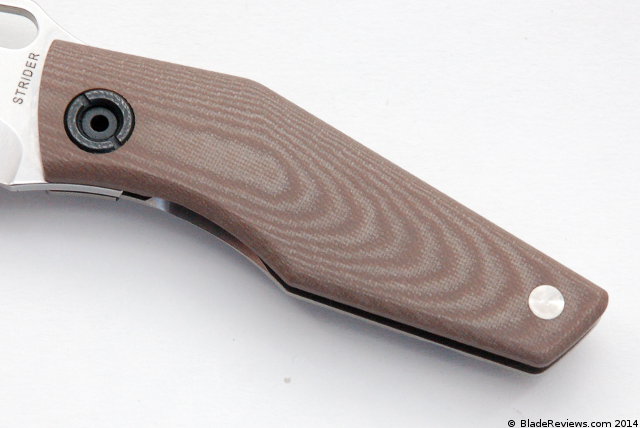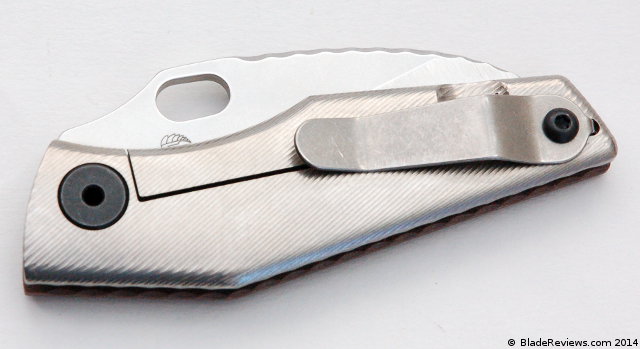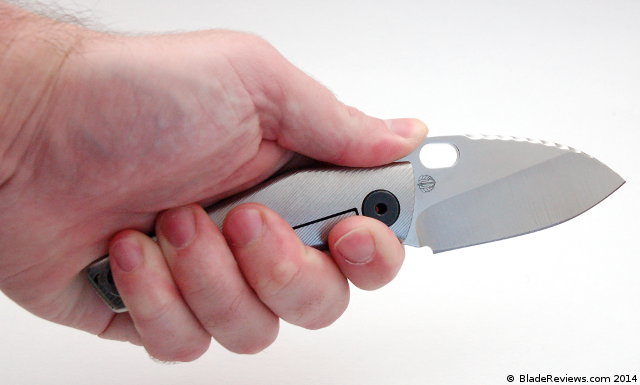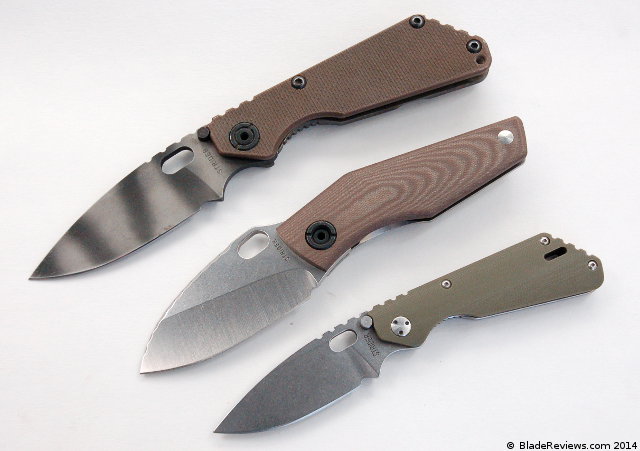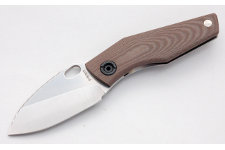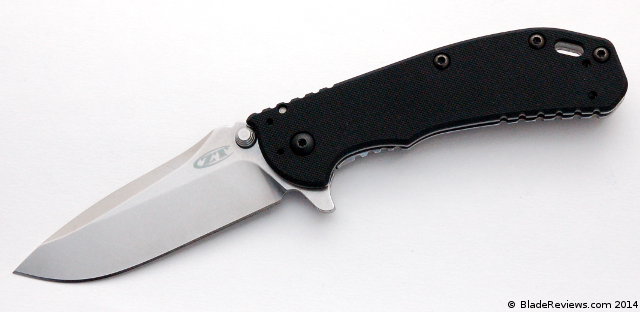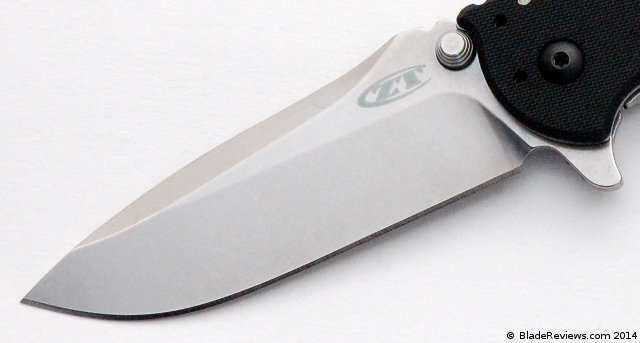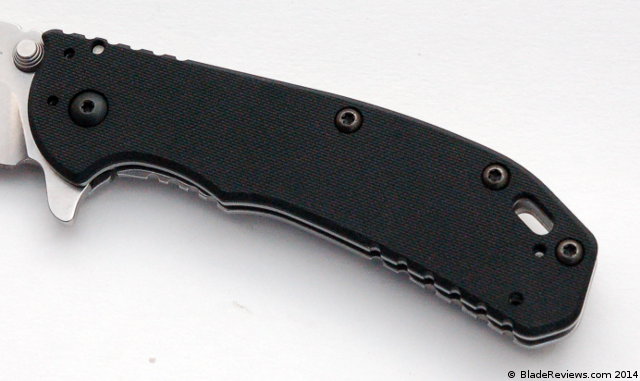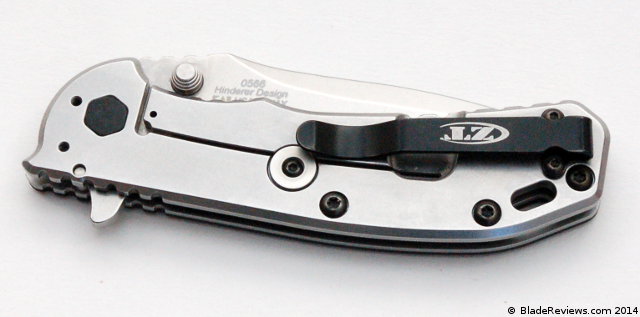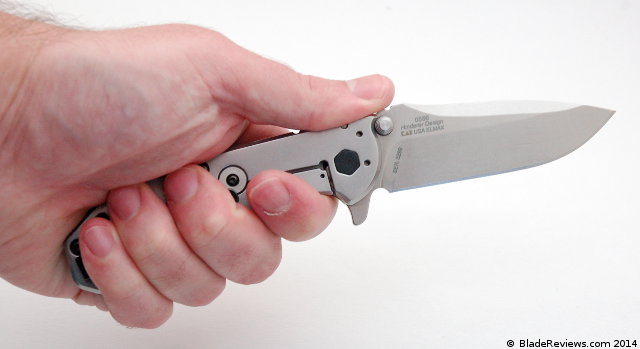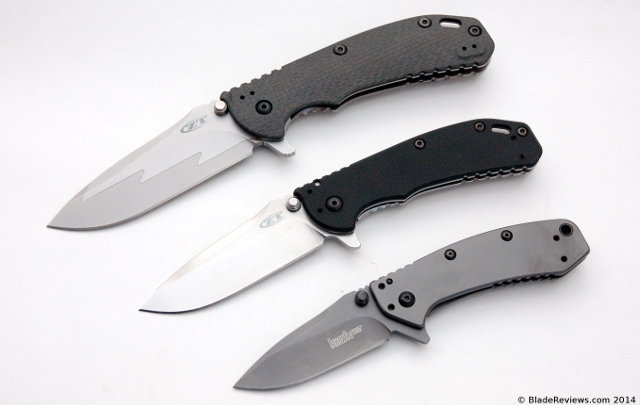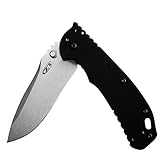Last Updated: September 30, 2017
By now most people are well acquainted with ESEE knives and their variety of fixed blade offerings. Hallmarked by their thick powder coatings, 1095 steel, USA origins, and unlimited lifetime warranty, I have grown to be quite a fan of ESEE products, and hold their Junglas and Izula II in especially high regard. ESEE is known for their no nonsense form over function tools, so it was quite interesting to see that ESEE was taking on a folding knife, and a sub 3″ framelock at that.
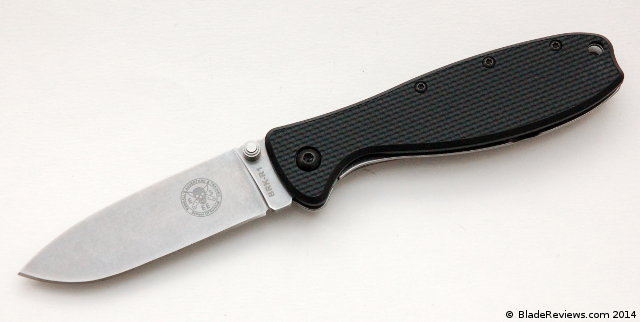
Buy the ESEE Zancudo at BladeHQ
[easyazon_cta add_to_cart=”default” align=”center” asin=”B00H83DBQ2″ cloaking=”default” height=”42″ key=”tall-orange” localization=”default” locale=”US” nofollow=”default” new_window=”default” tag=”brdfkdfk-20″ width=”120″]
The design of the Zancudo, which, by the way, is the Spanish word for mosquito, is unassuming enough. Whether it will live up to the legacy of their fixed blade offerings is an entirely different question.
General Dimensions and Blade Details
The Zancudo has an overall length of 7″, sports a 2.94″ blade, and weighs 3.1 oz. This is a great size for suburban EDC, although I don’t doubt it will do well at a camp site preparing food or performing other light camp chores. The sub 3″ blade is an interesting choice. There is plenty of room to gain a few extra millimeters so my guess is ESEE is trying to make a knife that flies under jurisdictions where 3″+ blades are outlawed. The full steel liner and steel frame lock add some heft to the knife, but it’s still slim and light enough to be an easy carry. In talking with globe-trotting renaissance man Kyle Ver Steeg on the podcast, I was surprised to learn that he prefers a small folder for most of his adventures. This could very well be an option for a trip to the Amazon, or disaster relief effort in the Philippines.
Your blade shape is a sloping modified drop point design. The spine of the knife droops down to almost a spearpoint, and the end result is a very utilitarian design with a thicker tip and relatively short belly. The blade is flat ground nice and thin, and the edge bevel has been neatly and uniformly applied. In practice the knife makes easy work of typical daily carry tasks like opening mail, cutting up fruit, and breaking down packages. A handsome dark stonewash has been applied for a well worn look right out of the box. The end result is an innocuous looking blade that packs plenty of punch for daily tasks. There are a lot of logos and markings on the blade. The mosquito on the back side is interesting; can’t say I have any other folders that share that distinction.
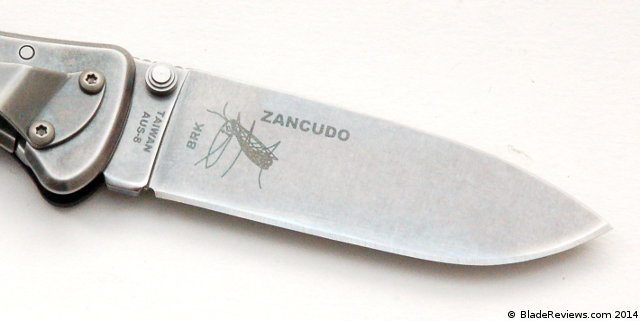
Blade steel is classic AUS 8, par for the course for any low price Taiwanese or Japanese made knife. I’ve said it before, I’ll say it again, AUS-8 is a relatively mild steel. Edge retention isn’t its claim to fame, but I have gotten plenty of work done with AUS-8, and it is extremely easy to sharpen and maintain. It’s also a very tough steel. For a sub $30 folder it’s a welcome choice.
Handle, Ergonomics and Pocket Clip
The handle on the Zancudo is so simple it is almost boring. It’s a form follows function kind of knife, and I don’t have a problem with that. On the show side you have a faux G10 scale over a full steel liner, on the lock side you have a tumbled stainless frame lock. The knife is of pillar construction and features a lanyard hole. One interesting detail is that the hardware on the locking side is stainless while the hardware on the non-locking side is black. This is a thoughtful and attractive touch. Thy could have easily gone with all stainless or all black hardware, so I like that they paid attention to this detail. It is also important to note that everything has been really well finished. There isn’t a sharp corner or unnoticed detail. Even the liner and inside of the frame lock has been polished to a mirror-like sheen.
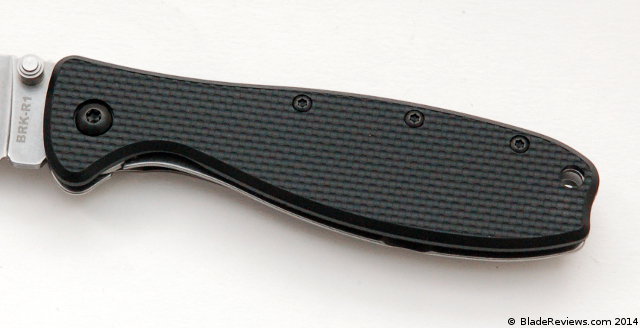
While on paper the handle of the Zancudo looks a little goofy, in hand it all makes sense. Mike Perrin decided to stretch this handle out to afford the user the full length of the handle without a choil or large guard. The resulting grip is sure and comfortable, and the knife is ready for work. The very short run of mild jimping is perfect for indexing your thumb and providing some level of traction without chewing into your flesh. The plastic scale, while inexpensive and not my favorite feature of the knife, has been patterned to mimic peel ply G10. The results are understated, and you have traction without the trauma often associated with aggressive G10 handles.
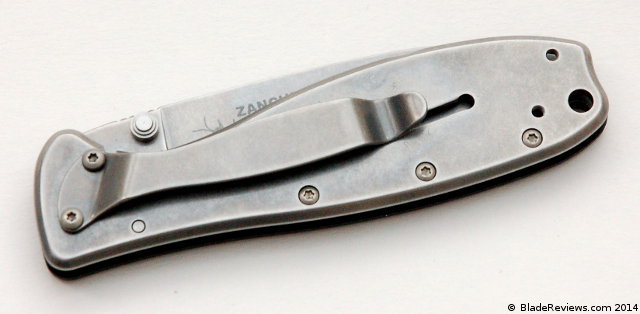
The pocket clip is functional but has an almost Ken Onion-esque curvature to it. I think it may be some sort of OEM piece, as I could have sworn I have seen this clip on another knife. The bend to the clip is quite severe, and it results in very sturdy and secure retention. The fact that it butts up against smooth stainless steel will save your pockets and make this knife easy to access. The clip comes right side tip down but the handle is also ready for right side tip up carry. The Zancudo is nice and slim and I found it very pocketable. The extra weight isn’t really noticible on heavy denim, but there are lighter knives out there if watching weight is your thing. I think ESEE’s product line is ripe for a lightweight version of the knife, as that would likely be of greater appeal to the weight conscious hiking and outdoors crowd.
Deployment and Lockup
Much like my Rat II, a firm flick of the ambidextrous thumb studs will send the blade flying out, and the blade glides on phosphor bronze washers. The thumb studs are simple and easy to get at, the way thumb studs on this kind of knife should be. No complaints in the deployment department.
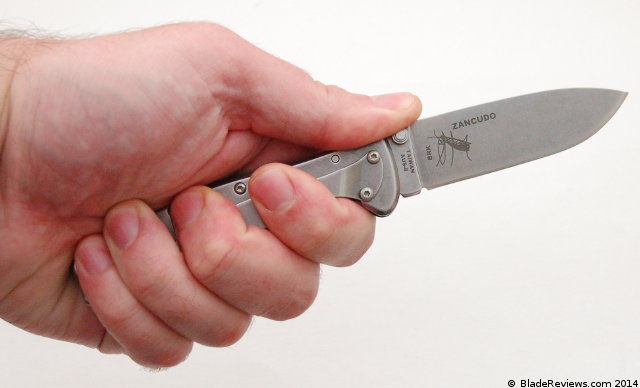
For lockup you have a steel framelock, and it is very robust and well implemented. Fresh out of the box I noticed a little blade stick, but that quickly calmed down and has been replaced by effortless rock solid lockup. Given how relatively thin both the blade stock and lockup are, I am impressed by the early (50%) lockup on this knife. That combined with the dead center blade provides a sense of pride of ownership that you don’t typically encounter with bargain basement blades.
ESEE Zancudo Review – Final Thoughts
Much like the Rat II, the Zancudo isn’t a particularly sexy knife, but it is practical, robust, and well made. You also can’t argue with the price. ESEE always manages to infuse a good deal of character with their knives, and I am happy to report that the trip overseas didn’t wash that character away. The tumbled steel, matching hardware, and big black bug on the blade all play a part in distinguishing this knife from the competition.
2017 Update: This is among my favorite knives in the $30 range, and it makes it to my best EDC knives list. Although I have always liked this knife, I didn’t come to this conclusion immediately. It was only after years of carry and use that I realized the depth of the Zancudo – how thoughtfully designed it was. It’s beautifully built for the money. I prefer it over the Rat II, and can think of little else that matches it at this price point. If you are on the fence about the Zancudo my recommendation is to buy it without hesitation.
[easyazon-block align=”center” asin=”B00H83DBQ2″ locale=”us”]
I recommend purchasing the ESEE Zancudo at Amazon or BladeHQ. Please consider that purchasing anything through any of the links on this website helps support BladeReviews.com, and keeps the site going. As always, any and all support is greatly appreciated. Thank you very much.
